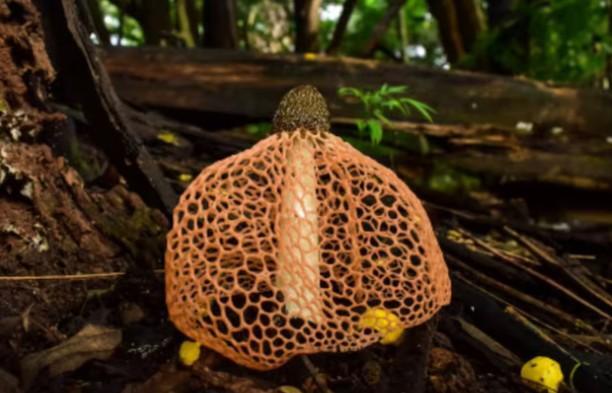
Rare Stinkhorn Mushroom Spotted at IISc Campus in Bengaluru
In a fascinating discovery, a rare stinkhorn mushroom was recently spotted on the campus of the Indian Institute of Science (IISc) in Bengaluru. The peculiar fungus, known for its pungent odor and unusual shape, has left many in awe of its unique characteristics. This rare sighting has sparked interest among scientists and nature enthusiasts alike, offering a glimpse into the rich biodiversity of the region.
Stinkhorn mushrooms belong to the family Phallaceae and are recognized by their distinctive appearance. They have a slimy, foul-smelling cap that resembles a phallus, which is said to resemble a human penis. This unique shape is thought to be an adaptation to attract flies that feed on decaying flesh, helping the fungus to disperse its spores.
The fungus produces a slimy spore mass, known as gleba, which sticks to the bodies of insects that come into contact with it. This clever mechanism allows the fungus to spread its spores efficiently, increasing its chances of survival and reproduction. The strong odor emitted by the mushroom is believed to be a key factor in attracting flies, as it mimics the smell of rotting meat.
The rare stinkhorn mushroom sighting at the IISc campus has raised questions about the presence of such species in urban areas. While fungi are often associated with forests and rural landscapes, this discovery highlights the importance of preserving and protecting even the most unexpected habitats.
Dr. K. Srinivas, a professor at the IISc Department of Botany, was instrumental in identifying the rare fungus. In an interview with a local newspaper, he stated, “This is a rare species that is not commonly found in urban areas. It’s a great opportunity for us to study its behavior and ecology, and learn more about the biodiversity of our region.”
The discovery of the rare stinkhorn mushroom has also sparked interest among students and researchers at the IISc. Several students have expressed their enthusiasm for studying the fungus and learning more about its unique characteristics.
“This is an exciting opportunity for us to study a rare species and learn more about its behavior and ecology,” said Rohan, a student at the IISc Department of Botany. “We’re eager to learn more about how the fungus interacts with its environment and how it adapts to its surroundings.”
In conclusion, the rare stinkhorn mushroom sighting at the IISc campus is a significant discovery that highlights the importance of preserving and protecting biodiversity in urban areas. This unique fungus has captured the imagination of scientists and nature enthusiasts alike, offering a glimpse into the fascinating world of fungi.






